At Ahrefs, our machine learning team has built an AI content detector (codenamed bot_or_not). We’re about to release the AI content detector for Ahrefs customers to use, so we decided to put it through its paces with a question we’ve been dying to answer:
What percentage of new content is AI-generated?
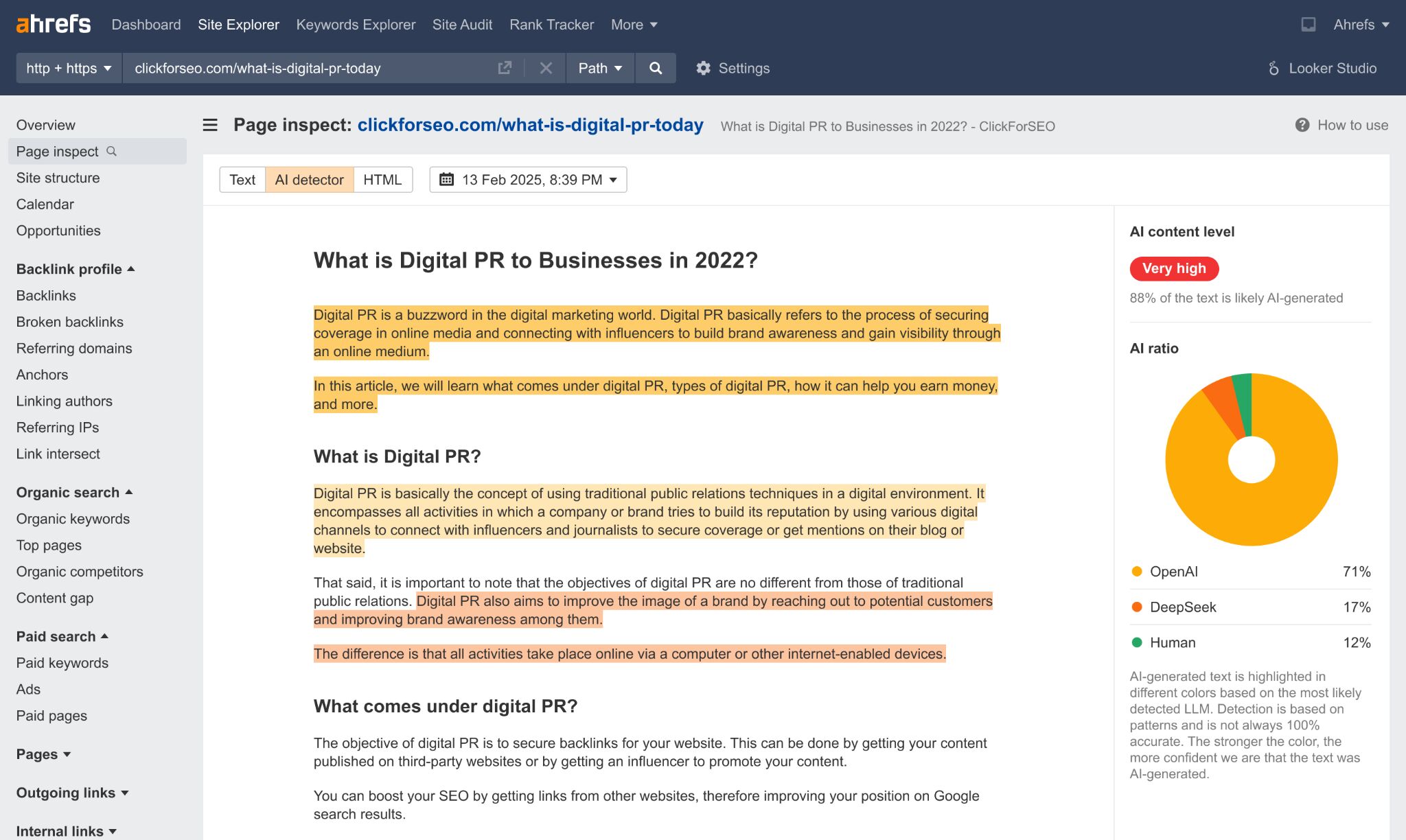
We’re about to release our AI content detector as part of the Page Inspect tool in Site Explorer.
We used bot_or_not to analyze 900,000 English-language web pages that were newly detected by our web crawler in April 2025. We analyzed one page per domain (so we tested content from 900,000 different domains). Each page was categorized according to the percentage of the page our model detected as being AI-generated.
Here’s what our content detector found:
- 2.5% of pages were categorized as “pure AI.”
- 25.8% were categorized as “pure human.”
- 71.7% were categorized as a mix of the two.
Of those that contained a mix of AI and human content:
- 25.86% showed moderate AI use (11%–40% of the page content was categorized as AI)
- 20.50% showed substantial AI use (41%–70%)
- 15.51% showed dominant AI use (71%–99%)
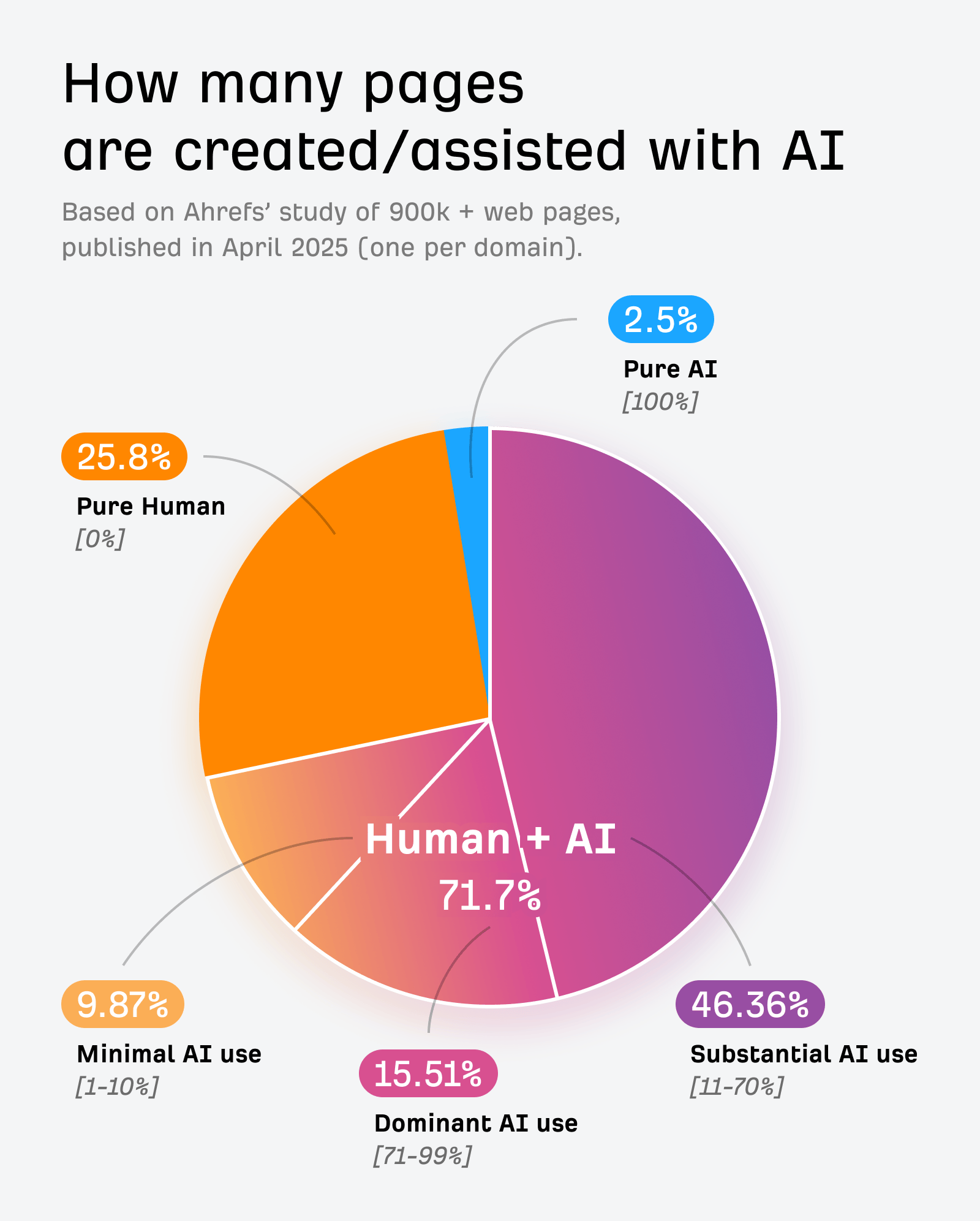
I was surprised that almost three-quarters of the pages we analyzed included AI content. But the longer I sat with the data, the more it made sense.
Free, fast AI content generation is available natively in Google Docs, in Gmail, in LinkedIn. AI can summarize Slack messages, conduct article research, shorten transcripts. It’s actively difficult to avoid the big, shiny “generate” button, and will only become more difficult as generative AI becomes further embedded in applications.
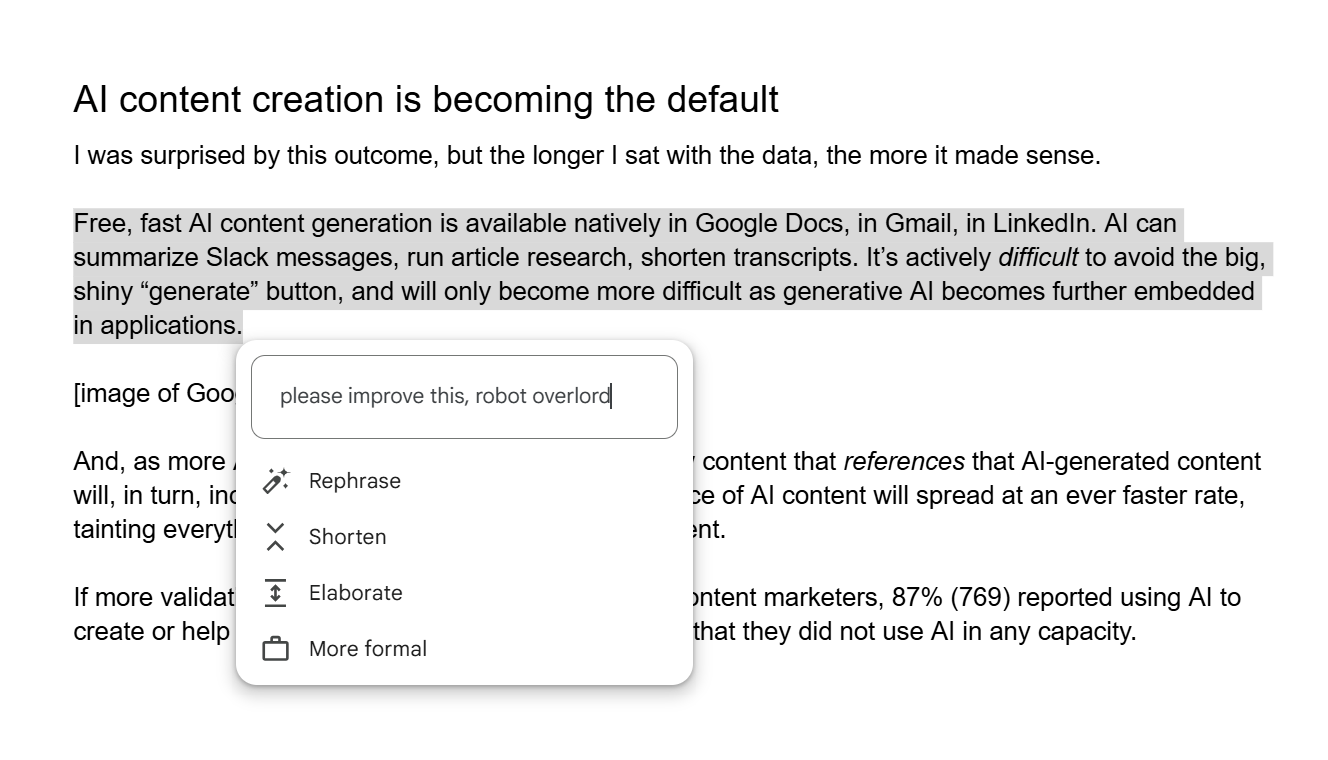
An example of generative AI available natively in Google Docs.
And, as more AI-generated content is created, the new content that references that AI-generated content will, in turn, include AI-generated material. The presence of AI content will spread at an ever faster rate, tainting everything it touches to a greater or lesser extent.
If more validation was needed, when I surveyed 879 content marketers, 87% reported using AI to create or help create content. Just 13% reported that they did not use AI in any capacity.
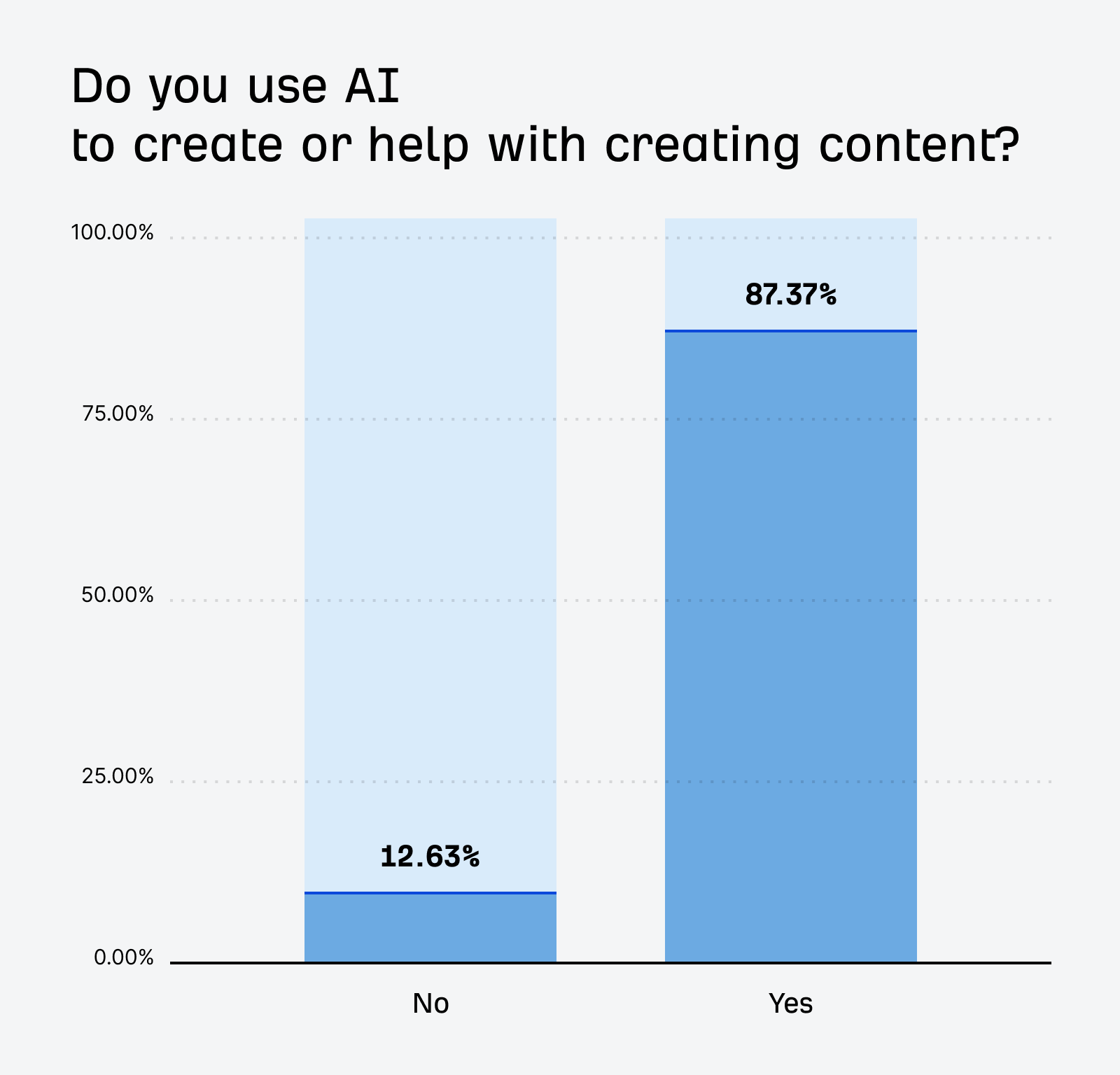
And, unsurprisingly, blog posts were the most common content type created by AI: 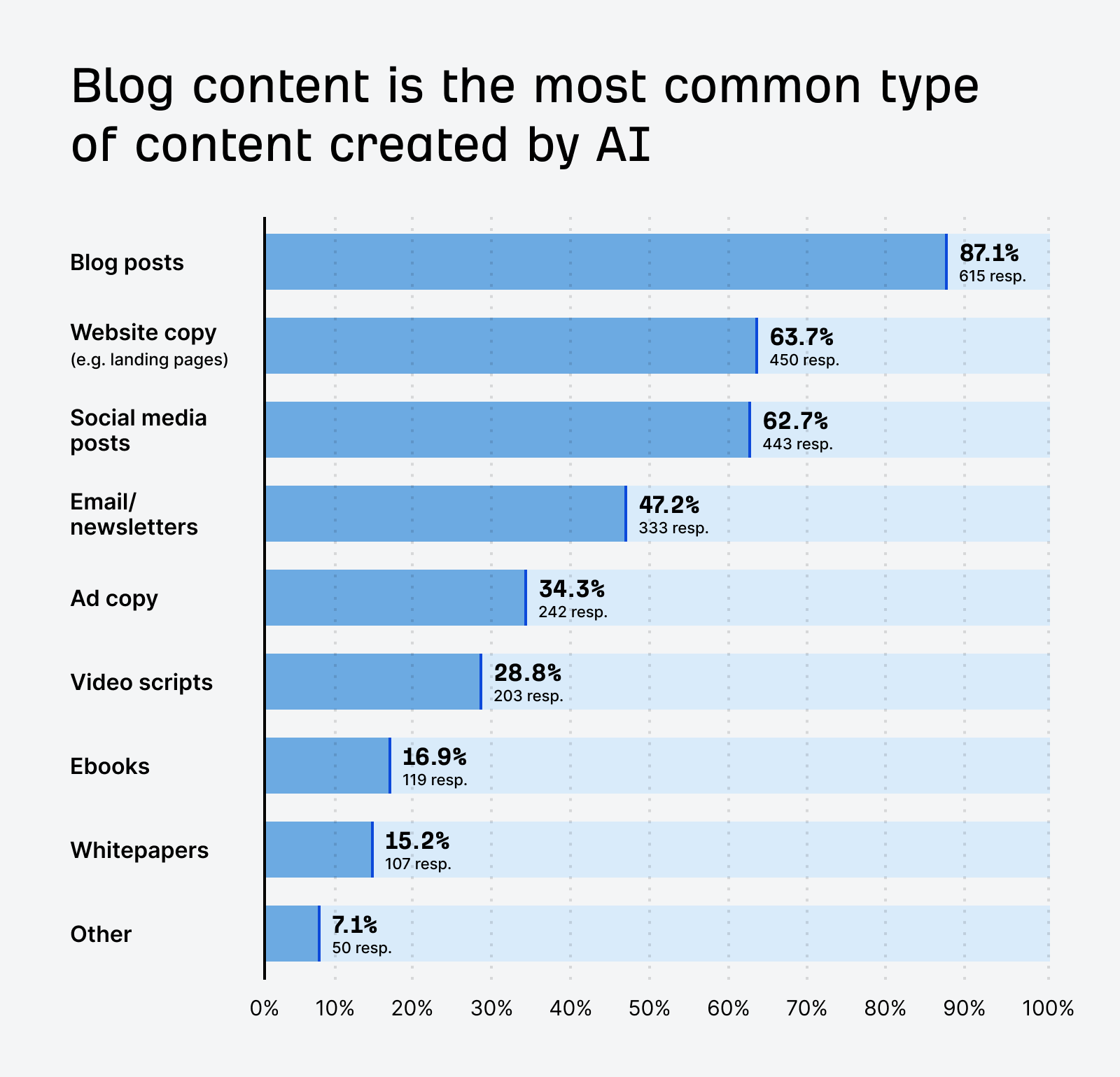
LLMs are too convenient and too cheap to be ignored. Using generative AI in content creation is quickly becoming the default.
No AI content detector is perfect. Different detection methods have different strengths and weaknesses, but all AI detection tools share similar struggles: they are often trained on narrow datasets, they struggle with partial detection, and they are vulnerable to humanising tools.
Discover the ins and outs of AI content detection in this short article: How Do AI Content Detectors Work? Answers From a Data Scientist.
Our team understands these limitations and built our tool with these problems in mind. We’ve had great results from testing our content detector on Ahrefs content, but—like every other market-leading content detector—it will never be 100% accurate.
But no SEO metric is 100% accurate. We all use search volume data to shape our strategy, but as we’ve written before, there is no such thing as “accurate” search volume. In the same way, AI content detection can be extremely helpful without being perfect.
You can see how much AI content your competitors publish, which models they use, and how that changes over time.
You can estimate how much AI content is present in a particular SERP, and work out if you need to invest more effort to rank.
You can even understand how organic performance metrics, like search traffic, keyword rankings, and backlinks, correlate with different levels of AI use (as I type, we’re running a study on this).
These tools should not be used in isolation to make life-or-death decisions about someone’s career—but they are an excellent source of data for high-performing marketers in the era of AI content.
Start using our new AI content detector
Our AI detection tool is about to launch as part of Site Explorer. You’ll also be able to try our model for free as part of our revamped free AI content detector.



